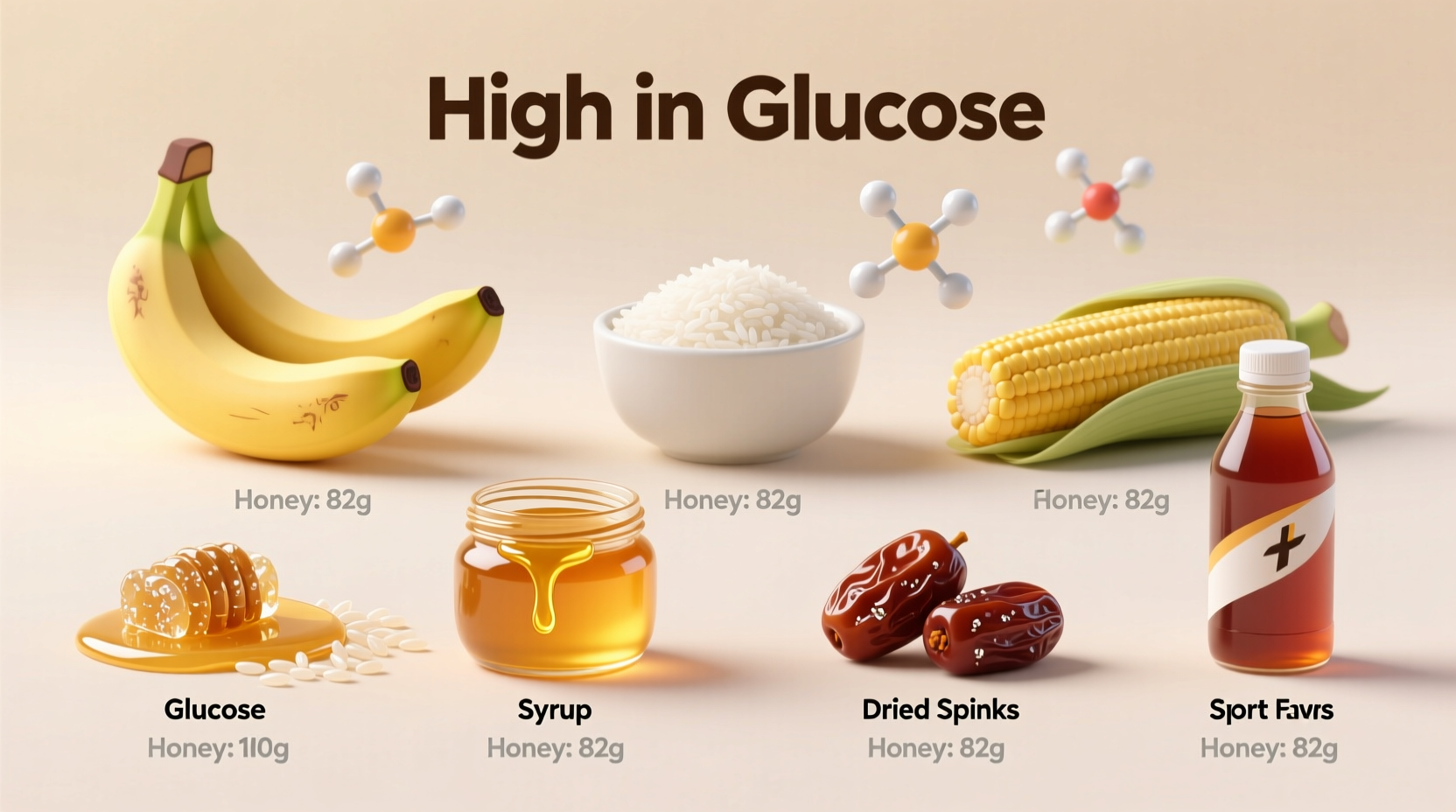If you're searching for foods high in glucose, here's the direct answer: Natural sources include fruits like grapes, mangoes, and bananas, plus honey and certain vegetables like beets. Processed foods with added glucose include soft drinks, candy, baked goods, and many packaged snacks. Understanding which foods contain significant glucose is essential for managing blood sugar levels, especially for people with diabetes or insulin resistance.
Glucose isn't just sugar you sprinkle in coffee—it's the fundamental energy molecule your body runs on. When you search what foods are high in glucose, you're likely trying to make informed choices about blood sugar management, athletic performance, or general wellness. This guide cuts through the confusion with scientifically verified information about glucose-rich foods and their practical implications for your diet.
Understanding Glucose in Your Food
Before diving into specific foods, it's crucial to distinguish between naturally occurring glucose and added glucose. Glucose is a simple sugar (monosaccharide) that serves as your body's primary energy source. Unlike table sugar (sucrose), which contains both glucose and fructose, pure glucose appears naturally in some foods and is also added to processed products.
According to the USDA FoodData Central, glucose content varies significantly across food categories. Whole foods with natural glucose come packaged with fiber, vitamins, and minerals that moderate blood sugar impact, while processed foods with added glucose often lack these balancing components.
Naturally Occurring Glucose: The Whole Food Approach
Fruits contain the highest natural concentrations of glucose. When evaluating which fruits have the most glucose, consider both the percentage of glucose in the fruit's sugar composition and the total sugar content per serving.
| Food | Glucose Content (per 100g) | Natural Sugar Composition |
|---|---|---|
| Grapes | 8.1g | Glucose: 52% | Fructose: 48% |
| Mango | 6.7g | Glucose: 47% | Fructose: 53% |
| Banana (ripe) | 5.0g | Glucose: 49% | Fructose: 51% |
| Honey | 31.0g | Glucose: 36% | Fructose: 40% | Sucrose: 8% |
| Beets | 3.8g | Glucose: 50% | Sucrose: 50% |
This comparison comes directly from the National Institutes of Health's comprehensive analysis of carbohydrate composition. Notice how honey appears in this natural foods list—while technically processed by bees, it contains glucose in its natural form without industrial refinement.

Processed Foods with Added Glucose: What to Watch For
Food manufacturers frequently add pure glucose (often labeled as dextrose) to enhance sweetness and texture. When researching processed foods high in glucose, check ingredient lists for these terms:
- Dextrose (pure glucose)
- Glucose syrup
- Corn syrup (contains glucose)
- Maltodextrin (breaks down to glucose)
Common culprits include:
- Sports drinks and flavored waters
- Breakfast cereals (even "healthy" varieties)
- Flavored yogurts
- Commercial breads and baked goods
- Condiments like ketchup and barbecue sauce
The Centers for Disease Control and Prevention reports that Americans consume approximately 17 teaspoons of added sugar daily—much of it in the form of glucose-containing sweeteners. This exceeds the American Heart Association's recommended limit of 6 teaspoons for women and 9 for men.
Context Matters: When High-Glucose Foods Serve a Purpose
Not all high-glucose foods are problematic. Understanding the practical applications of glucose-rich foods helps you make smarter choices:
- Post-exercise recovery: Athletes benefit from quick glucose absorption within 30 minutes after intense workouts
- Medical situations: People with hypoglycemia need rapid glucose sources
- Calorie-dense needs: Those trying to gain weight may strategically include glucose-rich foods
However, for individuals managing diabetes or insulin resistance, the American Diabetes Association emphasizes that timing and portion control of glucose-containing foods becomes critical. Pairing high-glucose foods with protein, fat, or fiber significantly reduces their glycemic impact.
Practical Strategies for Managing Glucose Intake
Instead of eliminating all glucose-containing foods—which would be both unnecessary and potentially harmful—focus on these evidence-based approaches:
- Read labels strategically: Look beyond "sugars" on nutrition facts to check ingredients for hidden glucose forms
- Choose whole fruit over juice: An apple contains the same natural sugars as apple juice but with fiber that slows glucose absorption
- Time carbohydrate intake: Distribute glucose-containing foods throughout the day rather than consuming large amounts at once
- Combine macronutrients: Eat fruit with nuts, or have bread with avocado to moderate blood sugar response
Research published in the American Journal of Clinical Nutrition confirms that food combinations significantly alter the glycemic response compared to consuming carbohydrates alone.
Your Glucose Knowledge Toolkit
Understanding what foods are high in glucose empowers you to make informed dietary choices without unnecessary restriction. Remember that natural glucose sources in whole foods provide valuable nutrients alongside their sugar content, while processed foods with added glucose typically offer empty calories.
For personalized guidance, consult a registered dietitian who can help you navigate glucose management based on your specific health needs, activity level, and dietary preferences. The goal isn't elimination but intelligent incorporation of glucose-containing foods into a balanced diet.











 浙公网安备
33010002000092号
浙公网安备
33010002000092号 浙B2-20120091-4
浙B2-20120091-4